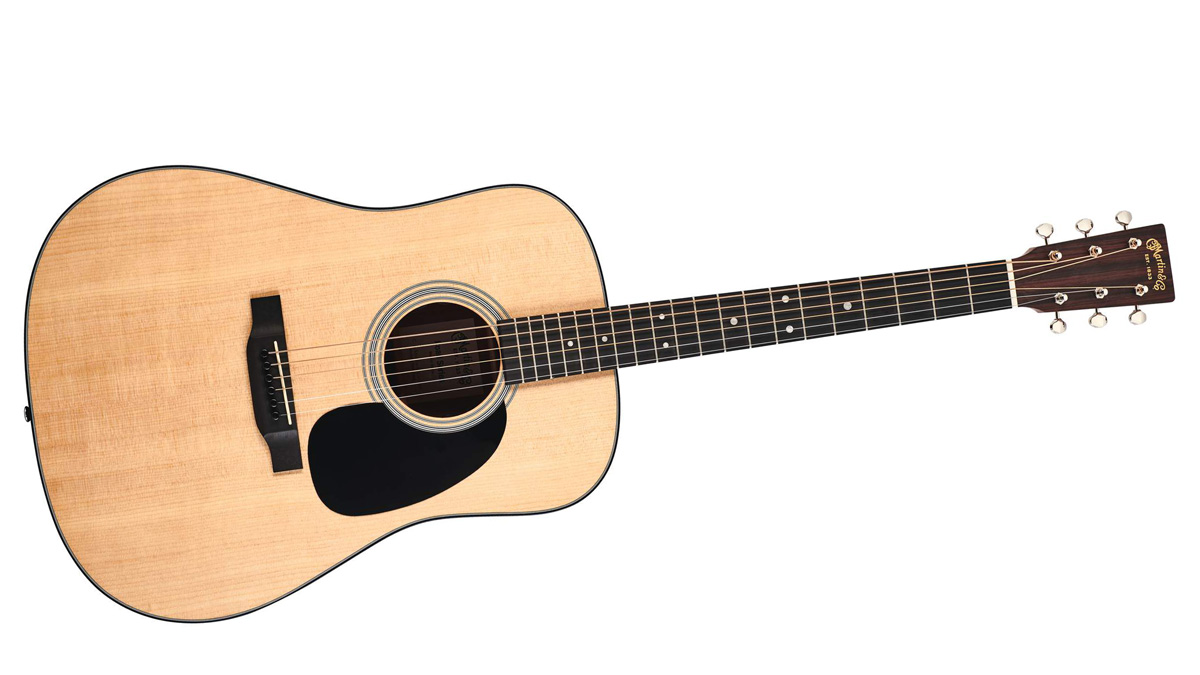MusicRadar Verdict
Thanks to experience and precedence, we can assume this guitar will grow old gracefully. As it stands, it’s off to a great start.
Pros
- +
Looks and feels like a classic Martin dread.
- +
The combination of Sitka spruce and sapele works great.
- +
The Fishman kit is excellent.
Cons
- -
Just the neck, although most should find it welcoming.
MusicRadar's got your back
Aren’t guitars amazing? Rarely are you faced with designs that are still doing the business more than a century later.
Okay, the Martin 000 didn’t become a steel-string until the 1920s, but that body style was around for decades before. Sure, the dreadnought wasn’t an official member of the Martin catalogue until 1931. It did, however, first see the light of day in 1916 when Martin produced it as a special order for the Oliver Ditson Company. So, nitpicks aside, these designs have stood the test of time.
Despite their differing body styles, these guitars have some things in common, such as their satin-finish select hardwood necks. Martin was one of the first acoustic brands to experiment with responsibly sourced alternative materials. If ‘select hardwood’ sounds vague, in practice whatever timber Martin has sourced for the Road Series necks looks good and feels stable.
The D-12e will accommodate any style from singer-songwriter to flatpicking bluegrass
Then there’s the fingerboards and bridges cut from FSC Certified Richlite. Designed as an alternative to ebony, this material is made from recycled sheets of paper soaked in a phenolic resin and exposed to high pressure and heat. The result is a tough product that will never shrink or warp. Its use is approved by the Forest Stewardship Council, an international body established in 1994 to promote responsible management of the world’s forests.
Other shared features of these Road Series models include equally eco Corian top nuts and compensated GraphTech Tusq bridge saddles, plus 20 medium frets and a 406mm (16-inch) fingerboard radius. Each ’board features ‘Mother-of-Pearl Pattern’ dot inlays, which suggest they are faux- oyster jobs... Meanwhile, you might have noticed the ‘E’ at the end of each guitar’s model designation. Yes, you get a fantastic Fishman MX-T pickup and preamp with these guitars. More on that in a bit.
Today, we’re focusing on the dreadnought bodied D-12E, which features tasteful-looking sapele back and sides. The top is your more traditional solid Sitka spruce. Like the back and sides, the top has a gloss finish. The elegant aesthetics continue with a black pickguard and ‘Style 28 Multi-Stripe’ rosette.
Sounds
This isn’t the first time we’ve reported on the Performing Artist neck shape and High Performance Taper fingerboard combo. Thanks to some misunderstanding via online forums, these crucial dimensions can stand a bit more exposure here. The High Performance Taper has nothing to do with the neck profile. The Performing Artist thing is the profile, a slim C shape that’s neither too fat nor too thin. It’s not a million miles away from a Taylor neck feel.
Getting to grips with the acoustic sounds on offer, we weren’t astonished to find that the D-12E has such a big voice. Tonally, it’s the all-rounder here. Strum it. Fingerpick. It’ll accommodate any style you like from singer-songwriter and modern country stuff to flatpicking bluegrass. The balance across the tonal range is already bedding in. We always expect great things from Sitka spruce and sapele holds its own as the backing group. There is a real mahogany-like response to this wood. It projects. Every note is bright and clear. The bottom-end is round and full, not woolly.
Fishman’s new MX-T preamp is a blast. Running in connection with the brand’s Sonicore under-saddle pickup, it features a master volume, master tone, a phase switch (the feedback killer) and an onboard tuner. All are neatly stuffed inside the soundhole.
The tuner’s LED screen faces towards you through the treble strings when the guitar is hanging from a strap, or in the seated position. Press the on/off button and the amplified signal is muted. Once tuned, hit it again and you’re back in business. There’s no thumping noise when you switch on or off. The volume control is self-explanatory. The tone is a bit more of a conversation piece. Rolled off, you get a flat response. As you turn the control up, the bass and treble frequencies are boosted while the mids are lightly scooped. This mimics what most guitarists do with electro-acoustics.
Reviewing new acoustics comes with a caveat. We’re encountering an instrument in its infancy, so we have to judge what it is now, not what it will become. To be fair, Martin has done everything possible to futureproof the tone here. Solid woods make all the difference. Thanks to experience and precedence, we can assume this guitar will grow old gracefully. As it stands, it’s off to a great start.
“Excels at unique modulated timbres, atonal drones and microtonal sequences that reinvent themselves each time you dare to touch the synth”: Soma Laboratories Lyra-4 review
“I used everything I knew about music”: How Green Day exceeded expectations with their most ambitious song
YouTube just added AI tools that makes musicians, library music and video editors redundant










